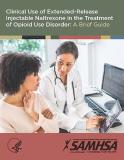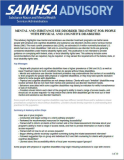
This advisory gives an overview of extended-release injectable naltrexone for people with opioid dependence. It discusses how it differs from other medication-assisted treatments, safety concerns, and patients most likely to benefit.
Units per Product
Download
Injectable Naltrexone for the Treatment of People with Opioid Dependence
File Type: PDF
File Size: 641 KB







